
Figure 1. First Hybrid Prototype
Early hybrid drilling concepts date back to the 1930s, but the development of a viable drilling tool has only become feasible with recent advances in Polycrystalline Diamond Compact (PDC) cutter technology. This paper describes a new generation of hybrid bits based on proven PDC bit designs with roll cutters on the bit periphery. Laboratory and field results will be presented, comparing the performance of hybrid bits with that of conventional PDC and roller bits. A hybrid bit can drill shale and other plastically behaving formations two to four times faster than a roller cone because it is more aggressive and efficient. The penetration rate of a hybrid bit responds linearly to Revolutions Per Minute (RPM), unlike roller taper bits that exhibit an exponential response with an exponent less than one. In other words, a hybrid drill will drill significantly faster than a comparable roller drill in motor applications. Another advantage is the influence of rolling mills on bit dynamics. Compared to conventional PDC bits, torsional oscillations are up to 50% lower, and low-speed slip/slip and high-speed swirl are reduced. This gives the hybrid drill a wider operating window and greatly improves tool face control in directional drilling. The Hybrid Drill is a highly specific drill aimed at traditional cylindrical taper applications limited by the Rate of Penetration (ROP), large-diameter PDC-bit and roller-cone-bit applications limited by torque or Weight on Bit (WOB). Highly interconnected formations with high torque fluctuations can cause premature C3 failure and limit mean operating value torque, and motor and/or P applications where higher ROP and better build speed and tool face control are desired.
The roller cone bit replaced the fishtail bit in the early 20 century as a more durable tool for drilling hard and abrasive formations. However, its limitations in drilling shale and other plastically behaving rocks were well known. The underlying cause was a combination of chip retention and/or bottom balling, which progressively worsens at greater depth as wellbore pressure and mud weight increase. Balling reduces the drilling efficiency of cone drills to a fraction of that observed under atmospheric conditions (Boughton & McCoy, 2006). Other phenomena such as tracking and off-center running further compound the problem. Many innovations in drilling fluids, roller cone bit design, and hydraulics have solved these problems, but improved performance only marginally. Fishtail drills, or fixed blade drills, are much less affected by these problems because they act as mechanical scrapers that continuously abrade the bottom of the borehole. This suggests that combining the two types of bits could offer significant advantages. However, the first hybrid bit prototype shown in Figure 1, which simply combines a fishtail and a roller bit, was never commercially successful because the fishtail or fixed cutting edge of the drill would wear prematurely and the large wear areas would reduce the rate of penetration even less than was achievable with a roller taper drill alone.

Figure 1. First Hybrid Prototype
The hybrid bit concept was revived with the introduction of much more durable PDC fixed cutter bits in the 1980s, and a wide variety of designs were patented (Brett et al., 1989). Some have been tested in the field, but again with mixed results mainly due to design flaws in the structures and insufficient life of the first-generation PDC cutters. Since then, significant progress has been made in Polycr ystalline Diamond Compact (PDC) cutter technology, and fixed blade PDC bits have replaced roller taper bits in all but a few applications for which roller taper bits are uniquely suited. These include hard, abrasive, and embedded formations, complex applications of directional drilling, and general applications where the torque requirements of a conventional PDC drill exceed the capabilities of a given drilling system. It is in these applications that a hybrid bit can substantially increase the performance of a roller taper bit with a lower level of damaging dynamics compared to a conventional PDC bit.
This article presents two basic hybrid bit designs: a doublecone, double-edged version for bits with a smaller diameter, and a larger three-coned, three-edged version for larger diameters, as shown in Figures 2 and 3. These designs are based on the proven four- and six-flute PDC bits, where the secondary blades have been replaced by shortened cylindrical cutters. As a result, the middle part of the well is cut only by the PDC cutters on the primary blades, while the more difficult-to-drill outer part is disintegrated by the combined action of the cutting elements on the rolling cutters and fixed blades (Pessier & Damschen, 2011). Rolling cutters are biased towards the back of the blades to open up a space or trash slot in front of the blades for chip return and nozzle placement.

Figure 2. Two Cone/Two Blade Hybrid Bit

Figure 3. Three Cone/Three Blade Hybrid Bit
Boughton and McCoy (2006) characterized thin to thickly bedded formations with inter-bedding among the various limestones, shales, sandstones, and siltstones that are folded into a series of steeply dipping north-south trending anticlines and synclines. Zones of ground-water production typically consist of one to two fracture sets, with little to no production from unfractured bedrock matrix. Measurements of transmissivity range from 2 to 1,490 feet squared per day, with the larger transmissivities occurring near bedding contacts and in zones with crossfaulting or jointing.
Brett et al. (1989) present the results of a study investigating PDC bit vibrations. The study shows that the most harmful vibrations can be attributed to a phenomenon called "bit whirl". During the whirl, the instantaneous center of rotation moves around the face of the bit, and the bit backwards whirls around the hole. Cutters on a whirling bit can move sideways, backwards, and much faster than those on a true rotating bit.
Pessier and Damschen (2011) describe a new generation of hybrid bits that is based on proven PDC-bit designs with rolling cutters on the periphery of the bit. Laboratory and field results will be presented that compare the performance of hybrid bits with that of conventional PDC and roller-cone bits. A hybrid bit can drill shale and other plastically behaving formations two to four times faster than a roller cone bit by being more aggressive and efficient.
Pessier and Fear (1992) conventional way to assess drilling performance in the oil field is to compare actual performance to statistical standards derived from offset records. By their nature, these standards are subjective and variable. While they are ideal for monitoring shortrange performance and trends in well-known, older fields, they lack the power of physical models to establish absolute, technical performance standards.
In the Jordanian Drilling Project, a 26-inch section was drilled in an offset well named "well A" using a 19 mm 6-flut e PDC bit. However, the drill could only drill 85 meters in 6.0 hours of bottom drilling. The drill achieved a Rate of Penetration (ROP) of 14.17 m/h but was Pulled Out of the Hole (POOH) for slow ROP. Surface examination revealed that the drill bit was severely damaged and dulled, classified as 3-2-BT-PR, as shown in Figure 4.

Figure 4. Shoulder Damage Seen On the 20-inches PDC Six-Bladed 19 mm Cutter Size
Different types of roller cone bits, with different International Association of Drilling Contractors (IADC) codes 535 or 515, were used to drill the offset well. These bits achieved longer runs, compared to the aforementioned PDC, but with a lower ROP in the 2-8 m/h range, as shown in Figure 5.

Figure 5. Bit Wear for the 20-In Roller-Cone Bit
The planned interval was drilled with four bits, one PDC and three roller taper bits. The drills drilled a total interval of 643 meters in 187.25 drilling hours at the bottom, with an average ROP of 3.4 m/h, according to drill logs as shown in Figure 6.

Figure 6. Well (A) Offset Bit Records
The new objective was to design a single bit solution for full interval drilling, providing good performance to improve drilling efficiency and overcome the existing drilling problems. These challenges were met by implementing a hybrid drill for a specific application. This hybrid bit combines the cutting action of a modern Poly-Crystalline Diamond Compact (PDC) with the crushing action of rolling cones. The 26-inch hybrid bit is very similar to the 17½-inch and 12¼-inch hybrid bits discussed in previous Society of Petroleum Engineers (SPE) papers, in that it has six fixed blades alternating with three roll cones (Pessier & Fear, 1992).
Differences between sizes are related to scale and application. A 26-inch diameter bit would drill through the top-hole section with low pressure and less bit weight available. The size and location of the cone allow for efficient suction when cutting. Other features such as cutter size, compact size, and wheel width are increased, for example, due to natural scaling and to meet other surfacehole drilling challenges with higher ROP requirements. These elements also provide the required durability through an optimized design approach to suit the application. Figure 7 illustrates the hybrid bit used in this application.

Figure 7. 26-inch Hybrid Bit (Proposed Bit with Six Blades and Three Cones)
From the start of the run, it was observed that the new hybrid bit drilled with lower torque fluctuations compared to the previous PDC drilling torque recorded in the offset well. This reduction in torque allowed the operator to apply more weight to the bit on the Bottom Hole Assembly (BHA), resulting in faster drilling. The drilling torque varied throughout the run depending on the type of lithology the bit was drilling. Regardless of whether the mean torque values were high or low, the torque fluctuation did not reach the rig stop moment. This performance maximized downhole drilling hours and resulted in higher ROP drilling throughout the interval. Figure 8 shows the 26-inch hybrid bit performance plotted graphs for Cumulative ROP and the depth vs. total hours (Dora et al., 2022).
The hybrid drill achieved an ROP of 9.66 m/h, which is 66 percent higher than estimated and 300 percent better than the best offset drill, as shown in Figure 9 performance.
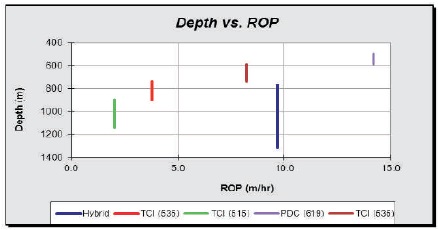
Figure 9. 26-inch Hybrid Compared to Offset Wells
A new 26-inch hybrid bit was pulled from the hole in good condition, as shown in Figure 10.
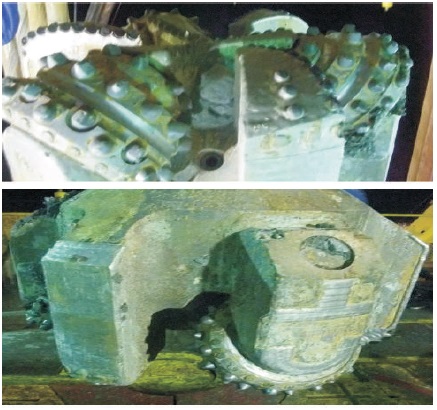
Figure 10. 26-inch Hybrid Bit Dull Pictures
For the first series of tests, Carthage marble with approximately 15,000 psi Unconfined Compressive Strength (UCS) was chosen as a typical medium-strength formation. Downhole conditions were 3000 psi Bottom Hole Pressure (BHP) and 9.5 lbm/gal water-based mud. The tests were conducted at a constant 120 rpm with a gradual increase in Weight on Bit (WOB). The WOB intervals were approximately 3 to 6 inches long, which is sufficient to create equilibrium conditions. Figure 11 shows ROP as a function of WOB for roller-cone and PDC bits and two versions of the 77⁄8-in. double cone hybrid bit with two blades, namely the cone guide (CL) and blade guide (BL). The terms indicate which cutting structure is dominant. In other words, the PDC cutting elements are drilling in the shadow of the rolling cutter. They take only a small Depth of Cut (DOC) and barely scrape the borehole bottom. In the BL version, on the other hand, the PDC cutting elements do most of the work, and the rolling cutters act more like DOC limiters and stabilizers (Mansoor et al., 2022). Figure 11 illustrates the well-known fact that PDC bits are as much as four times more aggressive than rollercone bits, with the hybrid bits, as expected, falling between the two extremes. The CL hybrid version falls closer to the roller-cone bit, and the BL hybrid version is closer to the PDC bit. This gives the drill-bit designer the option to select an aggressiveness that best fits a given drilling system or application.

Figure 11. ROP vs. WOB, Carthage Marble
Figure 12 shows the ROP as a function of torque for the same series of tests. All four bits require approximately the same amount of torque or power to drill at a given ROP. This suggests that the fundamental rock-fracture process is very similar for crushing and shearing or a combination of the two.
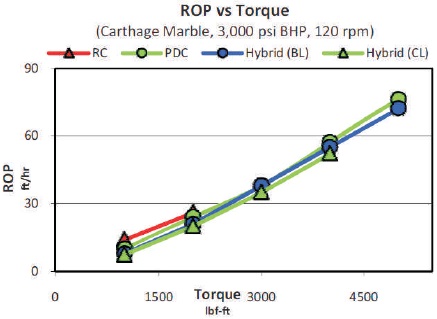
Figure 12. ROP vs. Torque, Carthage Marble
The roller-cone bit appears to be slightly more efficient in this medium-strength and still somewhat brittle rock. However, notice that at a WOB of 45,000 lbf, it could generate only 2,000 lbf-ft of torque, which is already approaching the limit of the WOB that can be applied to this size of bit. The roller-cone bit, therefore, cannot take advantage of more powerful rigs and motors because it's WOB and torque operating window is too narrow. The hybrid bits, on the other hand, have a much wider operating window and can use the full torque or power provided by modern drilling systems.
Another interesting aspect of bit performance is how a particular bit responds to RPM. Figure 13 shows that the roller-cone bit has a very flat response to RPM, while the hybrid and PDC bits respond proportionally to the increase in RPM. The poor response of the roller-cone bits to RPM in rock under confining pressure is well-known and is attributed to increased tracking at low depth of cut and less-effective bottom scouring and cleaning by jets traversing at high speed (Mansoor et al., 2021). The blades on the hybrid bit act as scrapers that break up the tracking pattern and clean the borehole bottom mechanically. This results in a significant advantage in performance drilling when both torque and RPM can be optimized to transmit the maximum power to the bit.

Figure 13. ROP vs RPM, Carthage Marble
The Catoosa shale, with a UCS of approximately 3,000 psi, was chosen for the second series of tests, which were run at 4,000-psi BHP and with the same 9.5-lbm/gal waterbased mud. In the soft shale, the weakness of the rollercone bit is most pronounced, as shown in Figure 14.
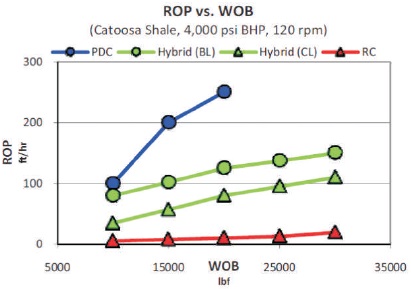
Figure 14. ROP vs WOB, Catoosa Shale
The PDC is almost ten times more aggressive than the roller-cone bit at the lowest WOB, and the difference gets even larger at higher WOB because of the difference in slope. While this is advantageous in pure ROP terms, it can become a handicap in practice when small changes in WOB cause large variations in ROP and torque (Sharma & Kudapa, 2021). Severe stick/slip or global bit balling might occur as a result of the erratic torque and ROP response. The hybrid bit is as much as four or eight times faster than the roller-cone bit, but its response to WOB is fairly flat and therefore ensures smoother running and resistance against sudden, global balling. Figure 15 shows ROP as a function of torque and emphasizes the weakness of rollercone bits in softer shale and other plastically behaving formations.

Figure 15. ROP vs Torque, Catoosa Shale
It takes about three times more torque for the roller cone bit to match the ROP of the PDC bit, which is much more efficient in shale because of its favorable scraping and shearing action. The hybrid bits are two or three times more efficient than the roller-cone bit at light WOB, but they cannot match the PDC bit at higher WOB or greater DOC. A PDC bit is clearly the best tool for pure shale drilling (Ponmani et al., 2019).
Jasper quartzite at 36,000-psi UCS and Gabbro at 49,000- psi UCS were selected for the hard-rock test series. These tests were run with a 12¼-in. three-cone, three-bladed hybrid bit at 4,000-psi BHP with 9.5-lbm/gal water-based mud. The three-cone, three-bladed bit allows a third option in the cone/blade arrangement, in which the matching pairs of cones and blades are located opposite Cones Opposite (CO) and thus share the drilling load equally between the two cutting structures, resulting in a drill bit with an aggressiveness falling roughly midway between roller-cone and PDC bits. The hard-rock tests were run at 120 RPM and at a constant WOB of 30, 40, and 70 kip for the PDC, hybrid, and roller-cone bit, respectively. The different WOB values were chosen to reach comparable torque or power at the bit. Figure 16 shows a bar graph of the ROP achieved with each bit type (Sharma & Kudapa, 2021).

Figure 16. ROP in Hard Rock Drilling
The hybrid bit was the fastest, leading the PDC and rollercone bits, but it also drew a slightly higher torque, as shown in Figure 17. To obtain a true measure of the efficiency of the three bit types, hybrid, PDC, and RC, both the Jasper and Gabbro get compared.

Figure 17. Torque in Hard Rock Drilling
Figure 18 gives the specific energy for each test. The figure shows that the roller-cone bit is indeed the most efficient bit in hard rock, but as in the medium-strength rock, it has already reached the maximum WOB limit, and no further ROP gains can be made unless its aggressiveness is increased.
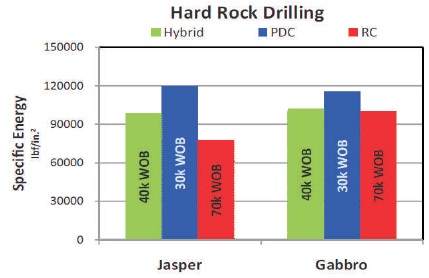
Figure 18. Specific Energy in Hard Rock Drilling
The hybrid bit shows a slightly lower specific energy than the PDC bit, which might indicate a possible synergy of the crushing and shearing action. The roller-cone cutting elements, which create a deep damage zone in the formation, might pre-fracture the hard rock and make it easier for the PDC cutting elements to penetrate and shear it. As in medium-strength rock, the hybrid bit has a much wider operating window and greater ROP potential than a roller-cone bit. The pre-fracturing of hard and abrasive material might make it possible to shear it more effectively and with less wear and damage than is experienced with conventional fixed-cutter or PDC bits.
After demonstrating the potential technical merits of the hybrid bit, the next phase of the development work focused on testing the field worthiness and durability of the prototype 77⁄8-in., 12¼-in., and 16-in. diameter hybrid bits. The first tests were performed on an experimental drill rig (Sinor et al., 2001a) that is capable of drilling 2,000- to 3,000 – ft.-deep holes through a variety of formations, ranging from soft shale to medium-strength limestone and sandstone sections. No structural deficiencies were found in these relatively short (10- to 20- hour) tests, and the unique drilling characteristics of the hybrid bit that were observed in the laboratory were confirmed (Sinor et al., 2001a).
The first true field test was run in Canada with the 12¼-in. three-cone, three-bladed hybrid bit in a surface hole. The fact that a hybrid bit requires less WOB than a roller-cone bit and runs smoother than a PDC bit proves to be an advantage in large diameter surface-hole drilling, which is quite often either WOB or torque limited. The hybrid bit out-drilled the offset PDC bit by approximately 33% and the roller-cone bit by 134%. The driller observed that the bit drilled surprisingly smoothly, and he was therefore able to apply almost as much WOB (24 vs. 28 kip) as on the offset roller-cone bit without experiencing bit bounce. Compared with the PDC bit, it was possible to run at much higher WOB (24 vs. 11 kip) and lower RPM (110 vs. 140) without experiencing stick/slip. The dull was green after the short 242-m, 10½-hour run (Sinor et al., 2001b).
The 12¼-inch hybrid bit run in Saudi Arabia was a directional motor application in medium-strength carbonates. It started with a short vertical section, then kicked off and built from 0 ° to 83 °. A typical offset PDC bit drilled this section of approximately 3,400 ft. at an average ROP of 51 ft/hr (17% sliding/83% rotating). The hybrid bit drilled 3,454 ft. in 72 hours at an average ROP of 48 ft./hr. (40% sliding/60% rotating). The greater amount of sliding was mainly because of the tight clearance between the borehole wall and the gauge pads and roller-cone-bit legs, which constrained the building capabilities of the bit. The first prototype hybrid bits were designed for maximum stability and straight holes, which resulted in a low tilt angle. The gauge clearance has been increased on secondgeneration designs, and no further "build" limitations were experienced. Overall, the run was considered a good run because it fell within 90% of the offset ROP, and the directional drillers commented on the smooth running and good tool-face control, which was seen as a significant benefit to improve not only the quality of the directionaldrilling process itself but also the service life and reliability of the complex and expensive BHA components used in directional drilling. The dull condition was good, as shown in Figure 19, and particularly the condition of the bearings and seals was encouraging after a total of 1.2 million revolutions on the rolling cutters (Tandberg, 1993).
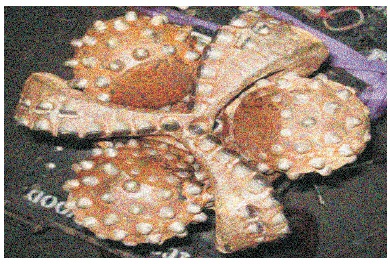
Figure 19. Hybrid Dull, Saudi Arabia Field Test
The first 77/8-inch hybrid bit with two cones and two blades was used in a motor directional application in north Texas that is typically drilled by roller-cone bits, with an average ROP of 78 ft/hr. The hybrid bit drilled the 3,800-ft-long section to the target depth 47% faster than a roller-cone bit at an ROP of 115 ft/hr. The directional capabilities were excellent, with good tool-face control and ROP during sliding. Although the footage drilled was comparable to the offsets, the dull condition was poor, as shown in Figure 20.
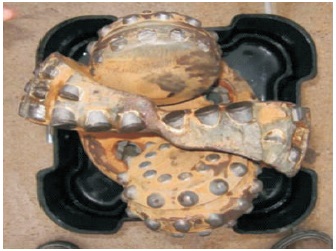
Figure 20. Hybrid Dull, North Texas Field Test
It appears that the shoulder and gauge on the PDC blades were damaged and wore first, which transferred the full load to the roller cones and damaged the entire bit beyond repair. There are many design options to further increase the wear resistance and durability of the smaller-diameter, lighter-set two-cone/two-blade designs, which are now being incorporated into new prototype designs.
Another 12¼-inch test was run in West Texas, which is a straight-hole, motor application in which deviation control is critical and requires frequent control drilling to fan back to vertical. The application is generally considered non-PDC drillable because of streaks of hard sandstone and chert. The average ROP of 26 ft. /hr. for the first hybrid run from 8,112 to 9,506 ft. was from 30 to 62% faster than the rollercone- offset runs and one PDC run on motors at RPMs ranging from 100 to 135. In shale, the instantaneous penetration rate of the hybrid bits was more than double that of the roller-cone bits. The fastest roller-cone offset at 28 ft/hr was run with conventional rotary at 68 RPM without the differential-pressure limits of the motor and at much higher hydraulic horsepower at the bit. Although it is not a valid comparison, this run is included here to illustrate that the chosen motor differential, and not the bit type, frequently determines the overall ROP. It also confirms that roller-cone bits in general benefit little from higher RPM. The run was terminated by a ring out in the hard caprock containing chert. The second run was slower mainly because it deviated early in the run and did not come back to vertical as fast as a conventional roller-cone bit because of the tight clearance between the borehole wall and the heavily reinforced gauge pads and bit legs. The majority of the run was spent fanning back to vertical at light WOB. The tight clearance has been recognized as a design issue and has been remedied on subsequent designs without sacrificing stability. The dull condition was PDC-cutter chippage and wear on the shoulder that was aggravated in the harder sections by the less-stable operating parameters of light WOB and high RPM (Wells & Pessier, 1993).
Hybrid bits have several advantages. They have better ROP than roller-cone and PDC bits, consume less time to drill longer sections, and do not get dull as easily. However, hybrid bits have not been widely adopted worldwide for drilling operations.
Previously, the operators used conventional roller-cone and PDC bits to drill the challenging surface hole section. However, the performance was inconsistent, leading to multiple trips and high surface hole costs. After implementing the 26-inch hybrid bit, torque fluctuations were reduced, allowing for better utilization of the power supplied to the bit, resulting in a maximum ROP of 9.66 m/hr. The combination of two cutting structures allowed for greater durability while drilling through difficult pyrite and conglomerates. The bit drilled three times faster than the best offset and saved the operator 4.5 days. Laboratory and field tests show that hybrid technology can improve the drilling mechanics and dynamic stability of drill bits. Hybrid bits are highly application-specific and should not be considered a direct replacement for either PDC or roller-cone bits. They have the potential to greatly enhance the performance of roller-cone bits in shale and other formations that behave plastically and are subject to bottom balling under high confining pressure. Hybrid bits are well-suited for drilling heterogeneous and interbedded formations where roller-cone bits are too slow and PDC bits are subject to premature damage due to harmful vibrations. In directional drilling, hybrid bits can provide good tool-face control at ROPs typical for PDC bits. The favorable dynamics of hybrid bits are most beneficial in large-diameter bits, which are run at the WOB and torque limits of most rigs, drill strings, and BHAs. The smoother running characteristics, lower torque oscillations, and generally lower vibrations of hybrid bits will improve not only drilling performance but also the reliability and service life of today's complex and expensive BHAs.